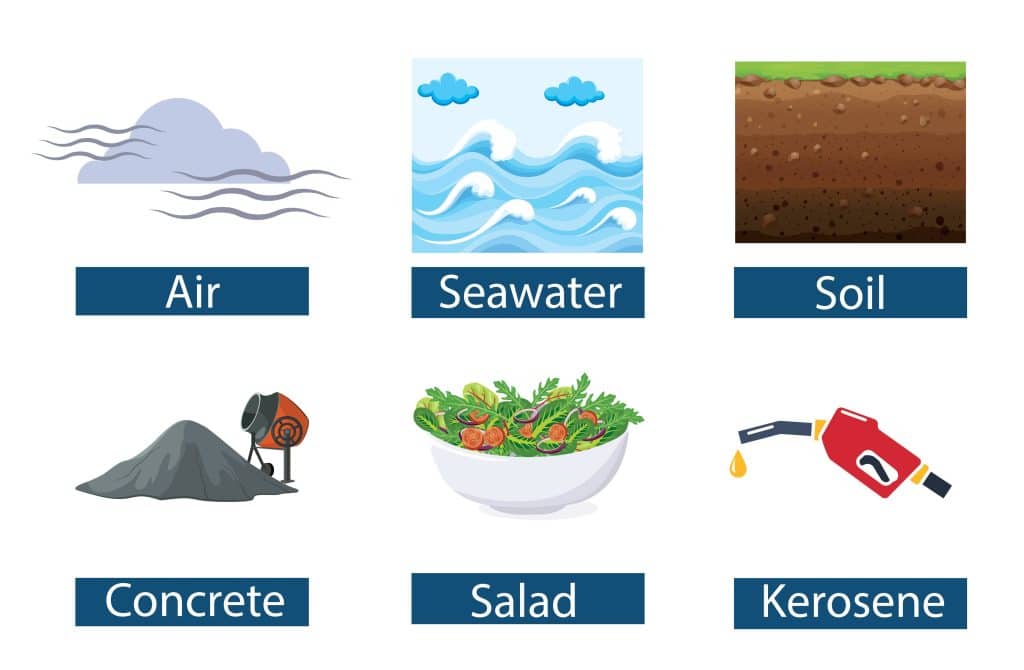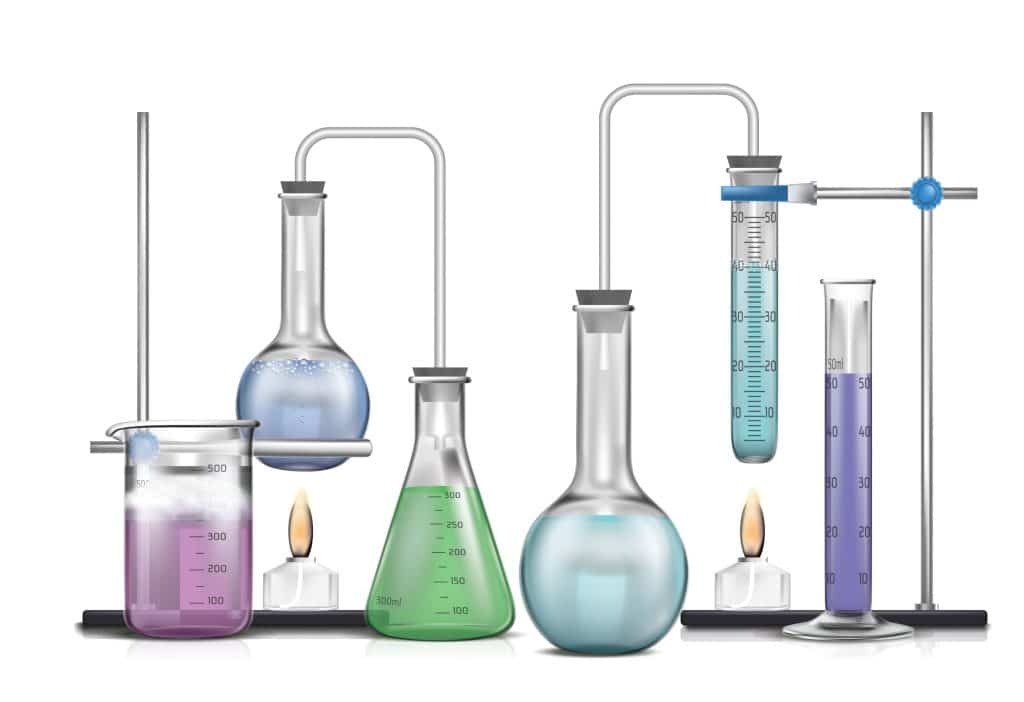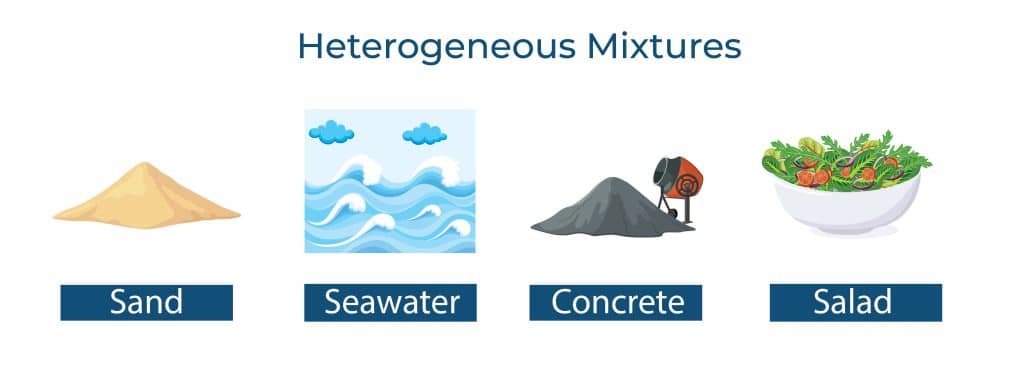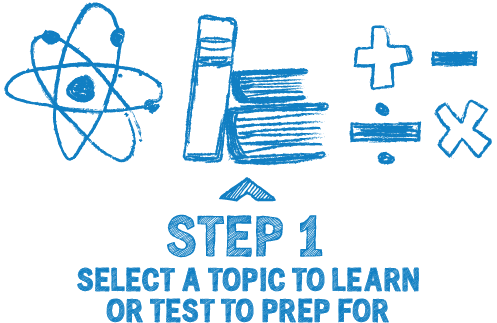Compounds and Mixtures
Grade 8 Science Worksheets
Compounds and Mixtures - Grade 8 Science Worksheet PDF
This is a free printable / downloadable PDF worksheet with practice problems and answers. You can also work on it online.
|
Untimed | |
Sign up with your email ID to access this free worksheet.
"We really love eTutorWorld!"
"We really love etutorworld!. Anand S and Pooja are excellent math teachers and are quick to respond with requests to tutor on any math topic!" - Kieran Y (via TrustSpot.io)
"My daughter gets distracted easily"
"My daughter gets distracted very easily and Ms. Medini and other teachers were patient with her and redirected her back to the courses.
With the help of Etutorworld, my daughter has been now selected in the Gifted and Talented Program for the school district"
- Nivea Sharma (via TrustSpot.io)
Compounds
A compound is a substance made up of two or more different elements that are chemically bonded together.
Examples of compounds include water (H2O), salt (NaCl), and carbon dioxide (CO2). The compounds can be further classified into organic compounds, which contain carbon and hydrogen, and inorganic compounds, which do not contain compounds of elements other than carbon with few exceptions like – carbon dioxide, carbonic acid, etc.
Some examples of organic compounds include methane (CH4), glucose (C6H12O6), and DNA (deoxyribonucleic acid), while examples of inorganic compounds include sulfuric acid (H2SO4), ammonia (NH3), and chlorine gas (Cl2).
There are several different types of compounds, including:
1. Ionic Compounds: These compounds are formed by the transfer of electrons from one atom to another, resulting in the formation of positively and negatively charged ions. Examples include sodium chloride (NaCl), magnesium oxide (MgO), and aluminum chloride (AlCl3).
2. Covalent Compounds: These compounds are formed by the sharing of electrons between two or more atoms. Examples include water (H2O), methane (CH4), and carbon dioxide (CO2).
3. Organic Compounds: These compounds contain carbon and hydrogen and are usually found in living organisms. Examples include carbohydrates, proteins, lipids, and nucleic acids.
4. Inorganic Compounds: These compounds do not contain carbon and hydrogen and are usually not found in living organisms. Examples include sulfuric acid (H2SO4), ammonia (NH3), and chlorine gas (Cl2).
5. Hydrates: These compounds consist of a compound and associated water molecules. example: CuSO4.5H2O – hydrated copper sulphate
6. Complex Compounds: These compounds are formed by the combination of a metal ion and one or more ligands. The metal ion acts as the central atom and the ligands are usually neutral molecules or anions that are bound to the metal ion through coordinate covalent bonds. Examples include [Fe(CN)6]^3-, [Cu(NH3)4]^2+
7. Polymers: These compounds are made up of repeating units called monomers. They can be synthetic or natural and are used to make a wide variety of products such as plastic, rubber, and fibers.
Mixtures
A mixture is a combination of two or more substances that are not chemically bonded together. The individual substances retain their own properties and can be separated from one another by physical means. Examples of mixtures include:

- Air: a mixture of gases such as nitrogen, oxygen, and argon
- Seawater: a mixture of water and dissolved salts such as sodium chloride
- Soil: a mixture of minerals, organic matter, and living organisms
- Concrete: a mixture of cement, water, and aggregates such as sand and gravel
- Salad: A mixture of various vegetables and fruits.
- Gasoline: A mixture of hydrocarbons and additives.
In general, mixtures can be classified as homogeneous or heterogeneous.
Homogenous Mixtures: Homogeneous mixtures, also known as solutions, are mixtures in which the composition is uniform throughout and the individual components cannot be easily distinguished. The particles of the components are so small that they are evenly distributed throughout the mixture and appear to be a single substance.

Examples of homogeneous mixtures include:
- Salt dissolved in water
- Sugar dissolved in coffee
- Oxygen and nitrogen in the air
- Alcohol and water in an alcoholic beverage
- A mixture of two gases (e.g. helium and neon)
- a mixture of two liquids with similar properties (e.g. ethanol and methanol)
- Alloys like bronze, which is a mixture of copper and tin
It is important to note that while the components of a homogeneous mixture are evenly distributed, they can still be separated by physical means, such as distillation or evaporation.
Heterogenous Mixtures: Heterogeneous mixtures are mixtures in which the composition is not uniform throughout and the individual components can be easily distinguished. The particles of the components are large enough to be seen and not evenly distributed throughout the mixture. They have different properties and are visible to the naked eye.

Examples of heterogeneous mixtures include:
- Sand and water
- Oil and water
- Salad (a mixture of different vegetables and fruits)
- Trail mix (a mixture of nuts, seeds, dried fruits, and chocolate)
- Concrete (a mixture of cement, water, and aggregates such as sand and gravel)
- Soil (a mixture of minerals, organic matter, and living organisms)
- Alloys, such as cast iron (a mixture of iron and carbon)
It’s important to note that while the components of a heterogeneous mixture can be easily distinguished, they cannot be separated by simple physical means, such as filtration or centrifugation. For example, separating oil and water requires the use of an emulsifying agent or centrifugation.
“There have been times when we booked them last minute, but the teachers have been extremely well-prepared and the help desk at etutorworld is very prompt.
Our kid is doing much better with a higher score.”
8th Grade Tutoring
eTutorWorld offers Personalized Online Tutoring for Math, Science, English, and Standardised Tests.
Our Tutoring Packs start at just under $21 per hour, and come with a moneyback guarantee.
Schedule a FREE Trial Session, and experience quality tutoring for yourself. (No credit card required.)
Difference between Compounds and Mixtures
The main difference between compounds and mixtures is in the way the individual components are chemically bonded together.
Compounds are made up of two or more different elements that are chemically bonded together. The individual elements lose their original properties and form a new substance with its own unique properties. Examples of compounds include water (H2O), salt (NaCl), and carbon dioxide (CO2). Hydrogen (H2) and Oxygen (O2) forms water (H2O); hydrogen is combustible and oxygen supports combustion whereas water is neither combustible nor supports combustion.
Mixtures, on the other hand, are combinations of two or more substances that are not chemically bonded together. The individual substances retain their own properties and can be separated from one another by physical means. Examples of mixtures include air (a mixture of gases such as nitrogen, oxygen, and argon), seawater (a mixture of water and dissolved salts such as sodium chloride), and soil (a mixture of minerals, organic matter, and living organisms).
In summary, compounds are chemically bonded substances that have unique properties, while mixtures are physically blended substances that retain their individual properties.
Do You Stack Up Against the Best?
If you have 30 minutes, try our free diagnostics test and assess your skills.

Kathleen Currence is one of the founders of eTutorWorld. Previously a middle school principal in Kansas City School District, she has an MA in Education from the University of Dayton, Ohio. She is a prolific writer, and likes to explain Science topics in student-friendly language. LinkedIn Profile
Affordable Tutoring Now Starts at Just $21
eTutorWorld offers affordable one-on-one live tutoring over the web for Grades K-12. We are also a leading provider of Test Prep help for Standardized Tests (SCAT, CogAT, MAP, SSAT, SAT, ACT, ISEE, and AP).
What makes eTutorWorld stand apart are: flexibility in lesson scheduling, quality of hand-picked tutors, assignment of tutors based on academic counseling and diagnostic tests of each student, and our 100% money-back guarantee.
Whether you have never tried personalized online tutoring before or are looking for better tutors and flexibility at an affordable price point, schedule a FREE TRIAL Session with us today.
*There is no purchase obligation or credit card requirement
Grade 8 Science Worksheets
- The Universe
- Heredity
- Evolutionary Theory
- Structure of the atom
- Ethical Practices
- Unveiling the mystery behind the physical universe
- Components of the universe
- Celestial phenomena
- The tilt of Earth’s axis
- The causes of high and low tides
- Earth Systems
- Rocks and Fossils
- Weather and Climate
- Basics of chemical reactions
- Types of Chemical reactions –Endothermic, exothermic, oxidation, reduction reactions
- Catalysts and enzymes
- Compounds and mixtures
- Acids, Bases and pH Indicators
IN THE NEWS

Our mission is to provide high quality online tutoring services, using state of the art Internet technology, to school students worldwide.
Online test prep and practice
SCAT
CogAT
SSAT
ISEE
PSAT
SAT
ACT
AP Exam
Science Tutoring
Physics Tutoring
Chemistry Tutoring
Biology Tutoring
Math Tutoring
Pre-Algebra Tutoring
Algebra Tutoring
Pre Calculus Tutoring
Calculus Tutoring
Geometry Tutoring
Trigonometry Tutoring
Statistics Tutoring
Quick links
Free Worksheets
Fact sheet
Sales Partner Opportunities
Parents
Passive Fundraising
Virtual Fundraising
Our Expert Tutors
Safe and Secure Tutoring
Interactive Online Tutoring
After School Tutoring
Elementary School Tutoring
Middle School Tutoring
High School Tutoring
Home Work Help
Math Tutors New York City
Press
©2022 eTutorWorld Terms of use Privacy Policy Site by Little Red Bird
©2022 eTutorWorld
Terms of use
Privacy Policy
Site by Little Red Bird










